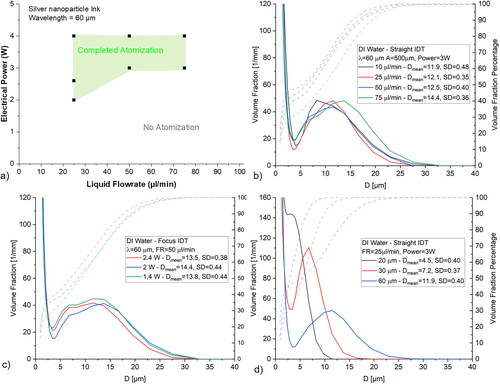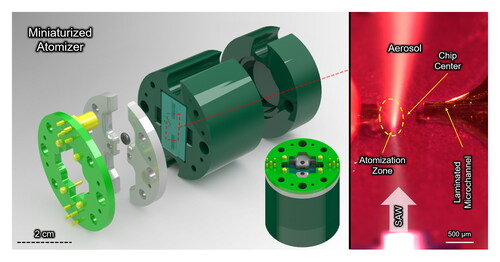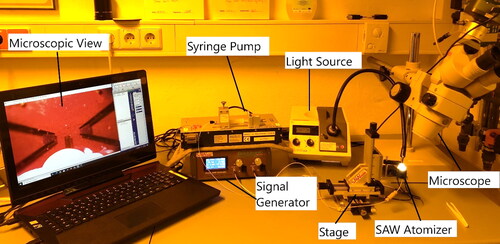Figures & data
Figure 1. (a) A SAW aerosol generation chip that features two laminated microchannels and metal IDTs. (b) Assembly schematic of the components of the SAW aerosol generator. c) Aerosol generation in action using the developed SAW aerosol generator.
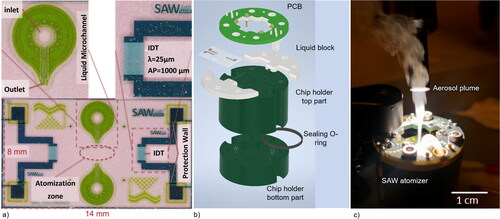
Figure 3. (a) Electrical characterization of three impedance-matched standing surface acoustic wave chips with different resonance frequencies in terms of the reflection coefficient magnitude (|S11|). (b) LDV measurement displaying the acoustic wave field profile superimposed over SAW chip microscope pictures for standing SAW with a 20 µm wavelength and 193.5 MHz excitation frequency. (c) Acoustic wave field profile in front of straight and focused IDTs for standing SAW with 30 µm wavelength. The scale bars represent 150 µm.

Figure 4. The observed atomization zone for different parameter settings utilizing DI water: (a) The effect of increasing the liquid flow rate using a 60 µm straight IDTs SAW chip. (b) The effect of increasing forward electrical power with 60 µm focused IDTs and (c) with 20 µm straight IDTs.
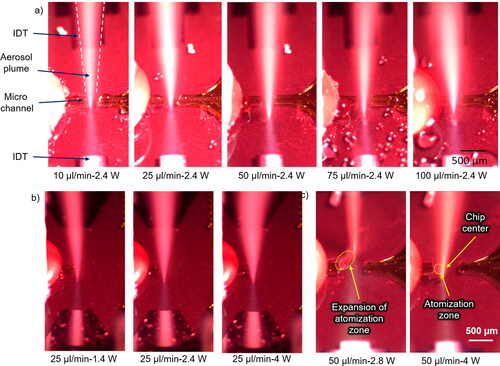
Figure 5. (a) The observed atomization zone for SAW chips with both focused (1.4 W) and straight (2.4 W) IDTs under identical process conditions. The DI water flow rate was 50 µL/min, and both SAW microfluidics chips have a 60 µm wavelength. (b) The observed atomization zone for a SAW chip with straight (3 W) IDTs when atomizing nanoparticle inks containing silver. The flow rate was 50 µL/min, and the SAW microfluidics chips have a 60 µm wavelength. (c) SAW chips featuring SU-8 and DFR laminated microfluidics channels after the atomization process.

Figure 6. The determined atomization regimes for SAW chips with three different IDT wavelengths and (a) straight IDTs and (b) focused IDTs using DI water.
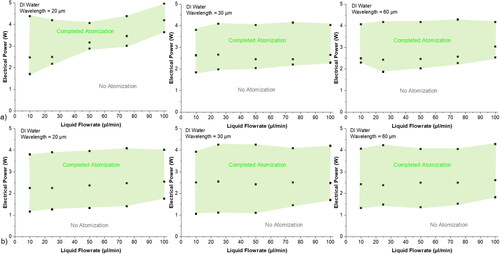
Figure 7. (a) The determined atomization regimes for a SAW chip with a 60 µm IDT wavelength and straight IDTs using silver nanoparticle ink. The measured droplet size distributions of DI water using a laser diffractometer varied for (b) liquid flow rate, (c) forward electrical power, and (d) acoustic wavelength.
